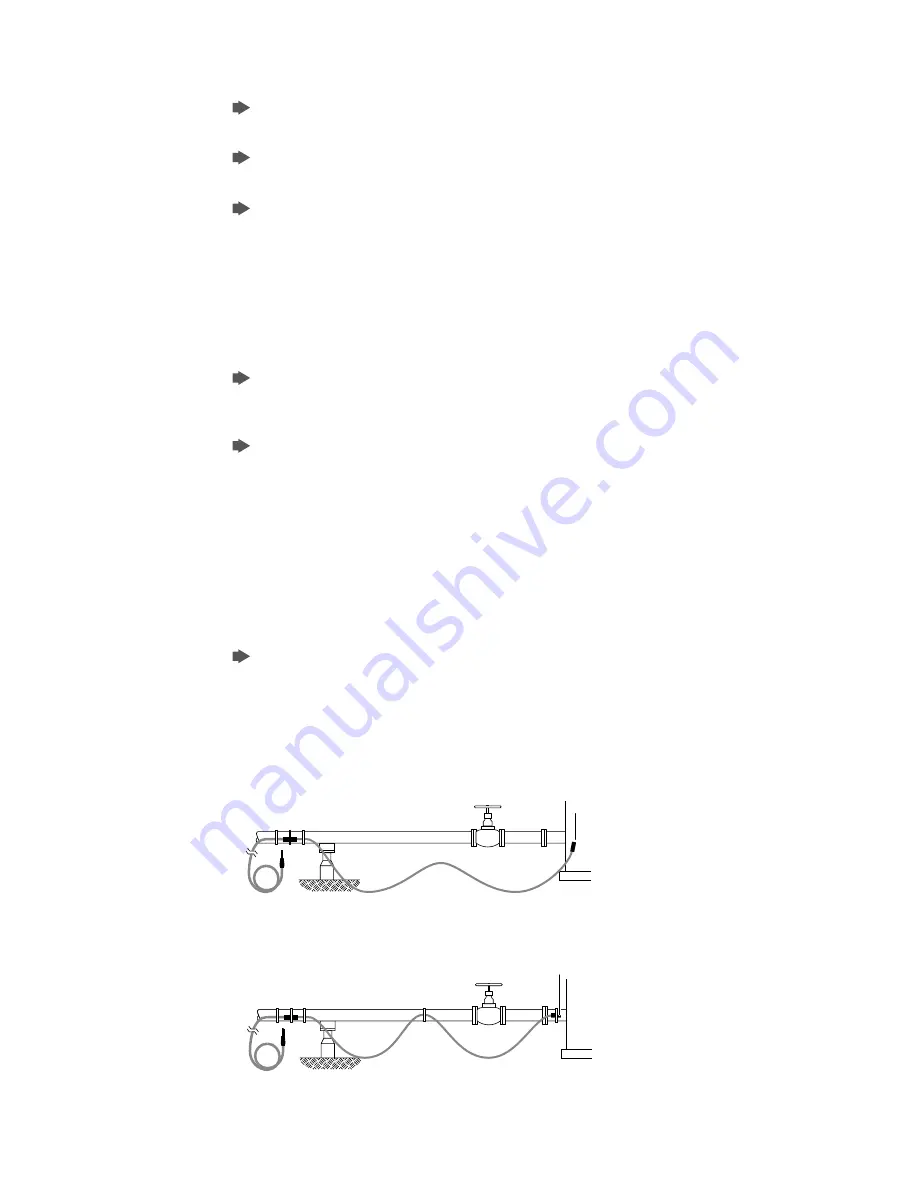
3.4 attachment materials
Stainless steel pipe straps for different pipe dimensions up to 36 “
(e.g. PB 300).
Stainless steel banding (30 m roll) together with stainless steel
buckles (one per fixing) (e.g. SNLS + SNLK).
Tie wire (e.g. RMI-TW) is especially suitable for the fixation on
irregular shapes like pumps, valves etc.. The use of tie wire with
softer sheath MI heating cables (like copper HC and cupro-nickel
HD) should be avoided where possible, as the tie wire can damage
the heating cable surface over time, use wire cloth band wherever
possible. For the installation of MI heating cables on metal
meshes, tie wire may be used, but must not be tighten and should
allow for free movement of MI heating cable during expansion and
contraction.
Pre-punched metal banding allowing fixed heater spacing, where
multiple runs of cable are applied
(e.g. HARD-SPACER-SS-25MM-25M).
Various types of metal meshes are available for installation on
tanks, valves, pumps (e.g. mesh types FT-19 and FT-20)
3.5 Typical installation details
The following details show some principles of MI cable installation,
using dual conductor cables. Single conductor cables follow the same
principles, but typically form a loop. Attention must be given, for single
conductor configurations, where both ends need to be terminated in the
same power supply box.
Where feasible, uncoil the heating cable and lay it alongside the
pipe section to be traced.
For shorter single conductor cable, to
be installed in the form of a „hairpin“, it may be advantageous to
unroll the heating cable, loop it, and then lay it alongside the pipe
section so that both runs of cable can be installed simultaneously.
figure 9: uncoiling heating cable
figure 10: attaching hot-cold joint and end cap
15
End
cap
Hot-cold joint
Tie wire /
wire cloth band
Stainless steel pipe strap, banding,
tie wire, wire cloth band, etc.
Leave large
bending radius (typ.)
End
cap
End
cap
Hot-cold joint
Tie wire /
wire cloth band
Stainless steel pipe strap, banding,
tie wire, wire cloth band, etc.
Leave large
bending radius (typ.)
End
cap
















































